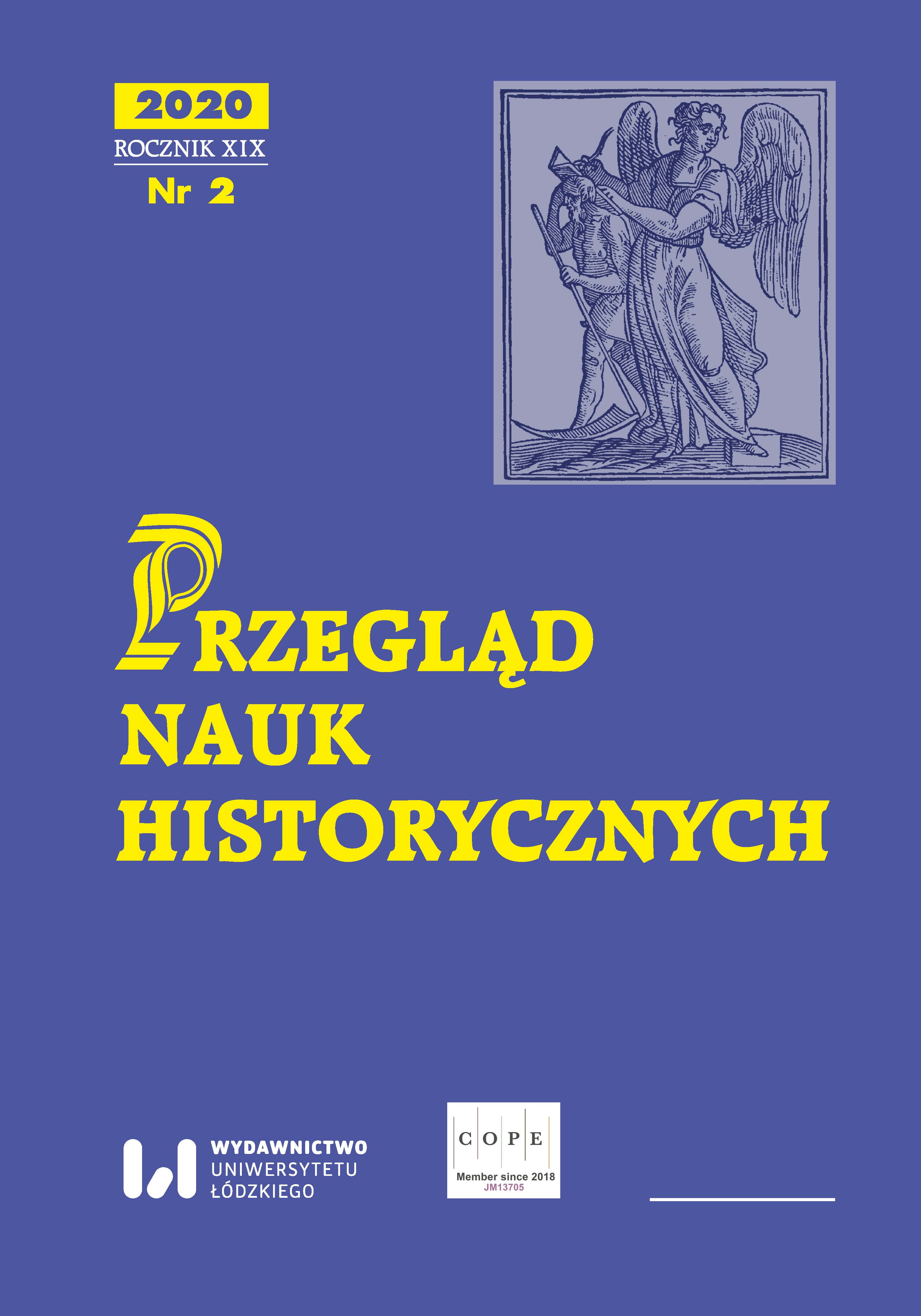Menstruacja w starożytności grecko-rzymskiej, żydowskiej i chrześcijańskiej
DOI:
https://doi.org/10.18778/1644-857X.19.02.09Słowa kluczowe:
menstruacja, religia żydowska, Pliniusz Starszy, literatura patrystyczna, kobieta cierpiąca na upływ krwiAbstrakt
Celem artykułu jest przedstawienie postrzegania menstruacji w starożytności w świecie grecko-rzymskim, żydowskim oraz chrześcijańskim, gdzie punktem wyjścia jest ewangeliczna perykopa o kobiecie cierpiącej na upływ krwi. Najpierw pojawiają się przykłady wypowiedzi i poglądów na temat przeżywających krwawienie miesięczne kobiet autorów rzymskich i greckich. Następnie zaprezentowane zostają źródła dotyczące sytuacji kobiet przeżywających menstruację oraz cierpiących z powodu chorobliwego upływu krwi wśród żydów, w tym wspomniana scena z Ewangelii. Trzecia część artykułu dotyczy opinii pisarzy chrześcijańskich na temat tego, czy kobiety mające menstruację powinny być wykluczone z życia religijnego.
Pobrania
Bibliografia
Achilles Tatius with and English Translation by S. Gaselee, London 1917.
Google Scholar
Les constitutions apostoliques, ed. M. Metzger, t. II, Paris 1986, Sources Chrétiennes, no. 329.
Google Scholar
Plinius Secundus C. (d. Ä), Naturkunde. Herausgegeben und übersetzt von Roderich
Google Scholar
König in Zusammenarbeit mit Gerhard Winkler, Buch VII (Anthropologie), Zurich 1996.
Google Scholar
Sancti Romani Melodi Cantica, eds P. Maas, C.A. Trypanis, Oxford 1963.
Google Scholar
The Letters and Other Remains of Dionysius of Alexandria, ed. Ch.L. Feltoe, Cambridge 1904.
Google Scholar
Branch R.G., A study of the woman in the crowd and her desperate courage (Mark 5:21–43), „In die Skriflig/In Luce Verbi” 2013, R. XLVII, nr 1, Art. #649, ss. 13.
Google Scholar
DOI: https://doi.org/10.4102/ids.v47i1.649
Cohen Sh.J.D., Menstruant and the Sacred in Judaism and Christianity, [w:] Women’s History and Ancient History, ed. S.B. Pomeroy, Chapel Hill–London 1991, s. 273–299.
Google Scholar
D’Angelo M.R., Power, Knowledge and the Bodies of Women in Mark 5:21–43, [w:] The Woman with the Blood Flow (Mark 5:24–34). Narrative, Iconic, and Anthropological Spaces, ed. B. Baert, Leuven–Walpole, Massachusetts 2014, s. 81–106.
Google Scholar
D’Angelo M.R., (Re)presentations of Women in the Gospels: John and Mark, [w:] Women and Christian Origins, eds R.S. Kraemer, M.R. D’Angelo, New York–Oxford 1999, s. 129–149.
Google Scholar
Dean-Jones L., The Cultural Construct of the Female Body in Classical Greek Science, [w:] Women’s History and Ancient History, ed. S.B. Pomeroy, Chapel Hill–London 1991, s. 111–137.
Google Scholar
Haber S., A Woman’s Touch: Feminist Encounters with the Hemorrhaging Woman in Mark 5.24–34, „Journal for the Study of the New Testament” 2003, R. XXVI, No. 2, s. 171–192.
Google Scholar
DOI: https://doi.org/10.1177/0142064X0302600203
Hanson A.E., Continuity and Change: Three Case Studies in Hippocratic Gynecological Therapy and Theory, [w:] Women’s History and Ancient History, ed. S.B. Pomeroy, Chapel Hill–London 1991, s. 73–110.
Google Scholar
Morris S., Blood and Holy Communion: Late Antique Use of Luke 8:42–48, „Studia Patristica” 2010, t. XLIV, s. 195–199.
Google Scholar
Selvidge M.J., Mark 5:25–34 and Leviticus 15:19–20: A Reaction to Restrictive Purity Regulations, „Journal of Biblical Literature”, December 1984, R. CIII, No. 4, s. 619–623.
Google Scholar
DOI: https://doi.org/10.2307/3260473
Wassen C., Jesus and the Hemorrhaging Woman in Mark 5:24–34: Insights from Purity Laws from Qumran, [w:] Scripture in Transition: Essays on Septuagint, Hebrew Bible, and Dead Sea Scrolls in Honour of Raija Sollamo, eds A. Voitila, J. Jokiranta, Leiden 2008, Supplements to the Journal for the Study of Judaism, No. 126, s. 641–660.
Google Scholar
Pobrania
Opublikowane
Jak cytować
Numer
Dział
Licencja

Utwór dostępny jest na licencji Creative Commons Uznanie autorstwa – Użycie niekomercyjne – Bez utworów zależnych 4.0 Międzynarodowe.













